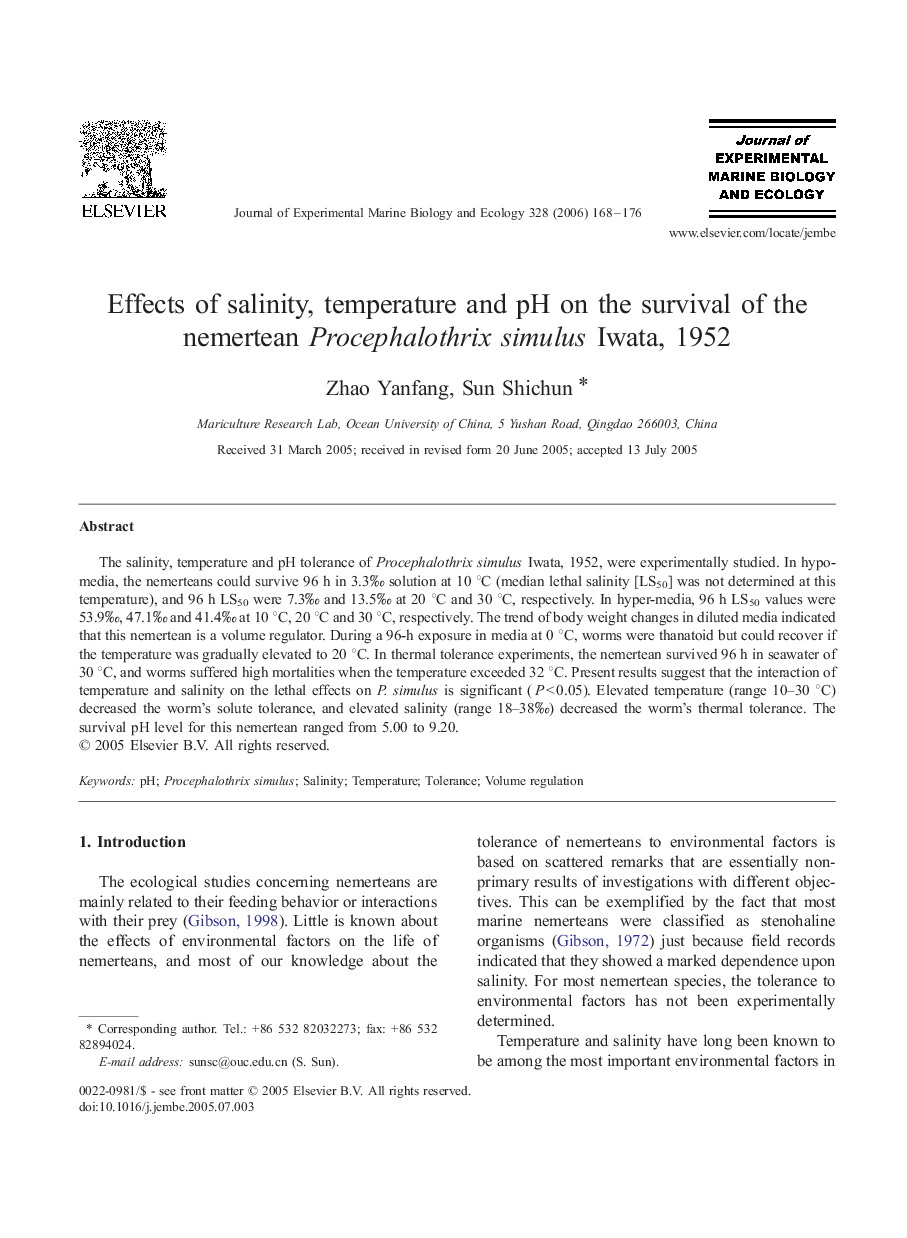| Article ID | Journal | Published Year | Pages | File Type |
|---|---|---|---|---|
| 4398275 | Journal of Experimental Marine Biology and Ecology | 2006 | 9 Pages |
Abstract
The salinity, temperature and pH tolerance of Procephalothrix simulus Iwata, 1952, were experimentally studied. In hypo-media, the nemerteans could survive 96 h in 3.3â° solution at 10 °C (median lethal salinity [LS50] was not determined at this temperature), and 96 h LS50 were 7.3â° and 13.5â° at 20 °C and 30 °C, respectively. In hyper-media, 96 h LS50 values were 53.9â°, 47.1â° and 41.4â° at 10 °C, 20 °C and 30 °C, respectively. The trend of body weight changes in diluted media indicated that this nemertean is a volume regulator. During a 96-h exposure in media at 0 °C, worms were thanatoid but could recover if the temperature was gradually elevated to 20 °C. In thermal tolerance experiments, the nemertean survived 96 h in seawater of 30 °C, and worms suffered high mortalities when the temperature exceeded 32 °C. Present results suggest that the interaction of temperature and salinity on the lethal effects on P. simulus is significant (P < 0.05). Elevated temperature (range 10-30 °C) decreased the worm's solute tolerance, and elevated salinity (range 18-38â°) decreased the worm's thermal tolerance. The survival pH level for this nemertean ranged from 5.00 to 9.20.
Related Topics
Life Sciences
Agricultural and Biological Sciences
Aquatic Science
Authors
Yanfang Zhao, Shichun Sun,
